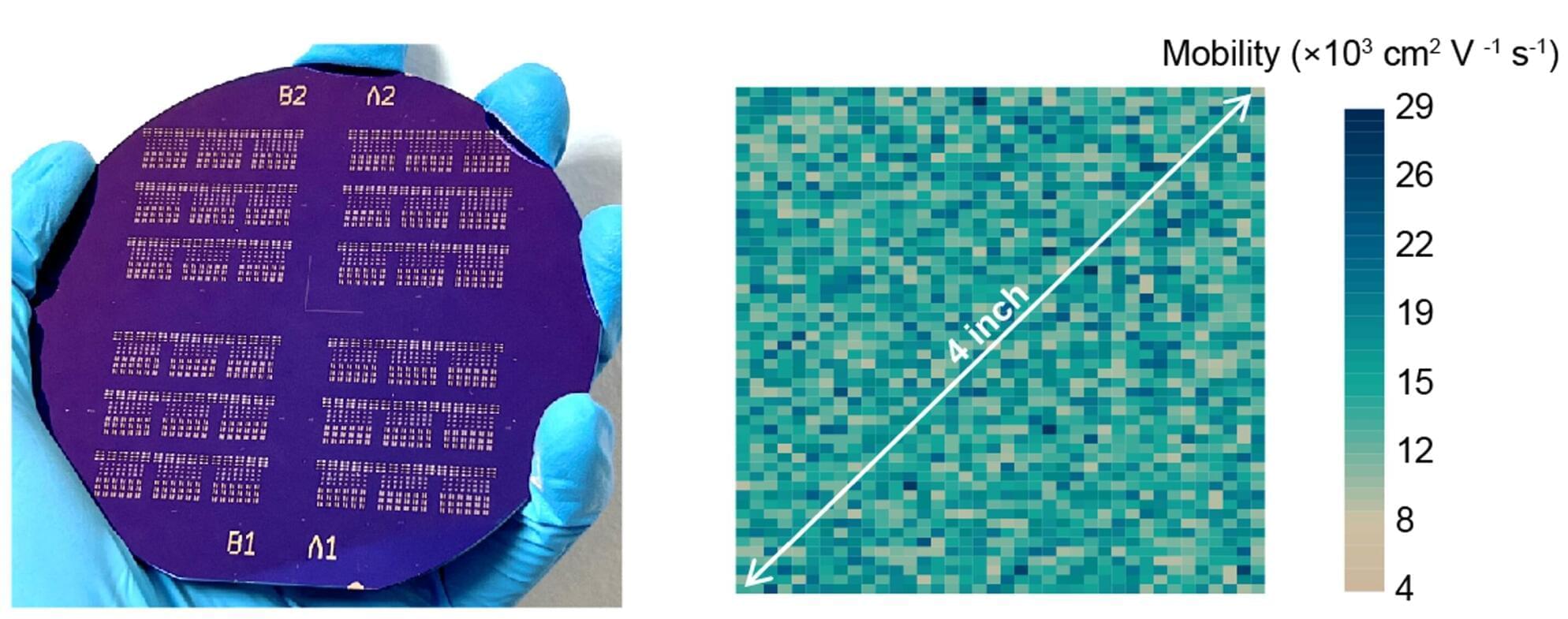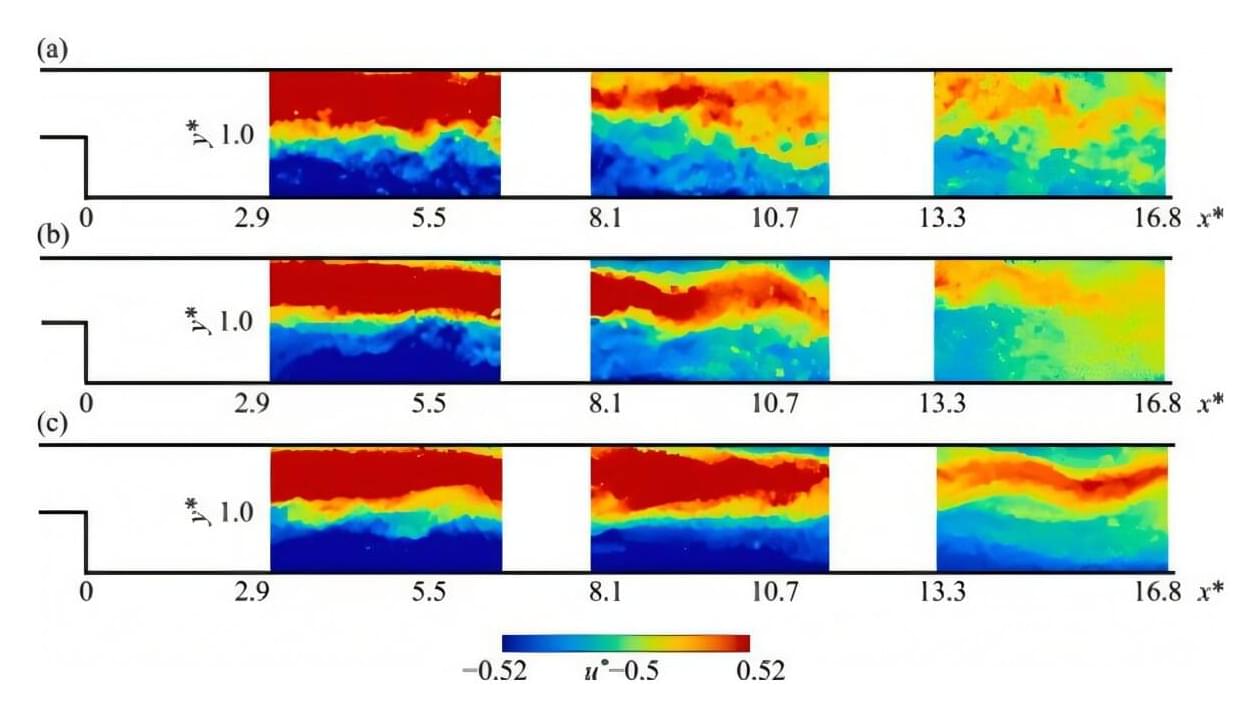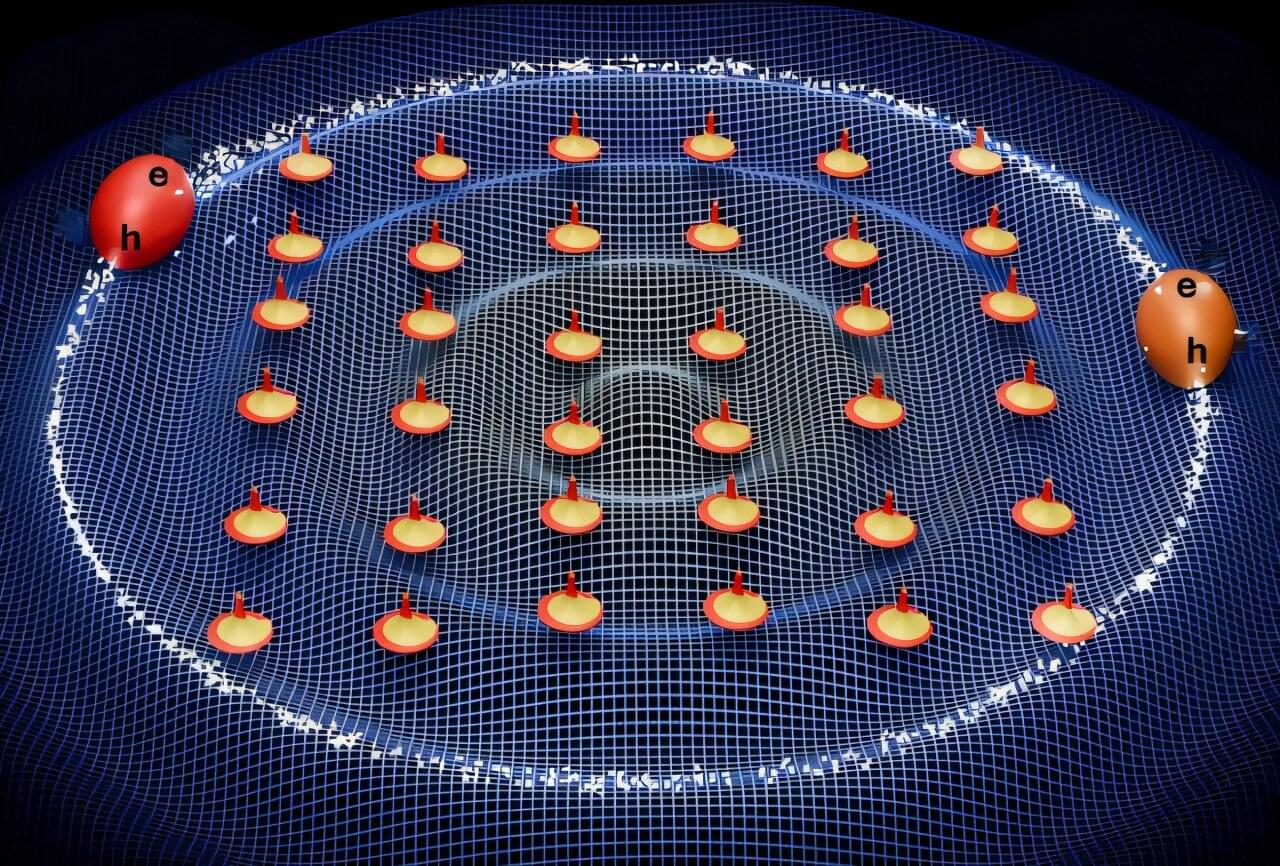Study found that magnetic order of chromium sulfide bromide can be turned on or off—like a switch—by changing the temperature.
Category: materials – Page 58

Controlling the optical properties of solids with acoustic waves
However, moderately significant changes have only been achieved under equilibrium conditions and at low temperatures. Significant differences at ambient temperatures, which are essential for applications, have so far been lacking.
For the first-ever time in collaboration with the theory groups of Angel Rubio (Max-Planck Institute, Hamburg) and Pascal Ruello (Université de Le Mans), EPFL scientists were able to control the excitonic properties using acoustic waves.
Scientists launched a high-frequency, large-amplitude acoustic wave in a material using ultrashort laser pulses. Doing this allowed them to manipulate the exciton properties at high speed. This astounding outcome was reached on titanium dioxide at room temperature, a cheap and abundant semiconductor that is used in a wide variety of light-energy conversion technologies, for example, photovoltaics, photocatalysis, and transparent conductive substrates.


New approach reliably integrates 2D semiconductors with dielectrics
Two-dimensional (2D) semiconductor materials could enable the development of smaller yet highly performing electronic components, thus contributing to the advancement of a variety of devices. While significant strides have been made in the synthesis of 2D semiconductors with advanced electronic properties, their clean transfer onto substrates and reliable integration in real devices has so far proved challenging.
Researchers at Peking University, the Beijing Graphene Institute and other institutes in China have recently developed a new method to integrate 2D semiconductors with dielectric materials, which are insulating materials that help control the flow of electric charge in devices. Their approach, outlined in a paper published in Nature Electronics, entails the epitaxial growth of an ultra-thin dielectric film on a graphene-covered copper surface, which subsequently enables its transfer onto various substrates with minimal defects.
“The paper emerged from recognizing persistent challenges in integrating two-dimensional materials—such as graphene—into microelectronic devices,” Zhongfan Liu, Li Lin, and Yanfeng Zhang, corresponding authors of the paper, told Tech Xplore.

Enhancing heat transfer using the turbulent flow of viscoelastic fluids
Fluids play a crucial role in industrial processes like cooling, heating, and mixing. Traditionally, most industries would utilize Newtonian fluids—which have a constant viscosity—for such processes. However, many are now adopting viscoelastic fluids, which can behave as both liquids and elastic materials.
These fluids can suppress turbulence in simple flows like straight pipes or channels, leading to reduced wall friction. This “drag reduction effect” has attracted significant interest due to its potential to enhance energy efficiency.
To advance the industrial applications of such fluids, it is critical to understand how these fluids interact with turbulence.

Beyond welding: Researchers 3D-print a single complex structure containing two metals
A team of Penn State researchers has used a new 3D-printing method to produce a complex metal build that was once only possible with welding: fusing two metals together into a single structure.
Using an advanced additive manufacturing process known as multi-material laser powder bed fusion—enabled by a newly acquired system in Penn State’s Center for Innovative Materials Processing Through Direct Digital Deposition (CIMP-3D)—the researchers printed a complex structure out of a blend of low-carbon stainless steel and bronze, which consists of 90% copper and 10% tin.
The researchers have published their approach in npj Advanced Manufacturing.

Physicists uncover electronic interactions mediated via spin waves
Research by physicists at The City College of New York is being credited for a novel discovery regarding the interaction of electronic excitations via spin waves. The finding by the Laboratory for Nano and Micro Photonics (LaNMP) team headed by physicist Vinod Menon could open the door to future technologies and advanced applications such as optical modulators, all-optical logic gates, and quantum transducers. The work is reported in the journal Nature Materials.
The researchers showed the emergence of interaction between electronic excitations (excitons—electron hole pairs) mediated via spin waves in atomically thin (2D) magnets. They demonstrated that the excitons can interact indirectly through magnons (spin waves), which are like ripples or waves in the 2D material’s magnetic structure.
“Think of magnons as tiny flip-flops of atomic magnets inside the crystal. One exciton changes the local magnetism, and that change then influences another exciton nearby. It’s like two floating objects pulling toward each other by disturbing water waves around them,” said Menon.

Twisted crystals open door to smaller, more powerful sensors for optical devices
Twisted moiré photonic crystals—an advanced type of optical metamaterial—have shown enormous potential in the race to engineer smaller, more capable and more powerful optical systems. How do they work?
Imagine you have two pieces of fabric with regular patterns, like stripes or checkers. When you lay the two pieces of fabric directly on top of each other, you can see each pattern clearly. But if you slightly shift one piece of fabric or twist it, new patterns that weren’t in either of the original fabrics emerge.
In twisted moiré photonic crystals, how the layers twist and overlap can change how the material interacts with light. By changing the twist angle and the spacing between layers, these materials can be fine-tuned to control and manipulate different aspects of light simultaneously—meaning the multiple optical components typically needed to simultaneously measure light’s phase, polarization, and wavelength could be replaced with one device.


Researchers Disprove Their Own Work by Producing Power From Earth’s Rotation
A trio of US researchers claim to have successfully tested predictions that it’s possible to harvest clean energy from the natural rhythms and processes of our planet, generating electricity as Earth rotates through its own magnetic field.
Though the voltage they produced was tiny, the possibility could give rise to a new way to generate electricity from our planet’s dynamics, alongside tidal, solar, wind, and geothermal power production.
In 2016, Princeton astrophysicist Christopher Chyba and JPL planetary scientist Kevin Hand challenged their own proof that such a feat ought to be impossible. The researchers have now uncovered empirical evidence that their proof-breaking idea may actually work, as long as the shape and properties of the conducting material in their method are set to very specific requirements.